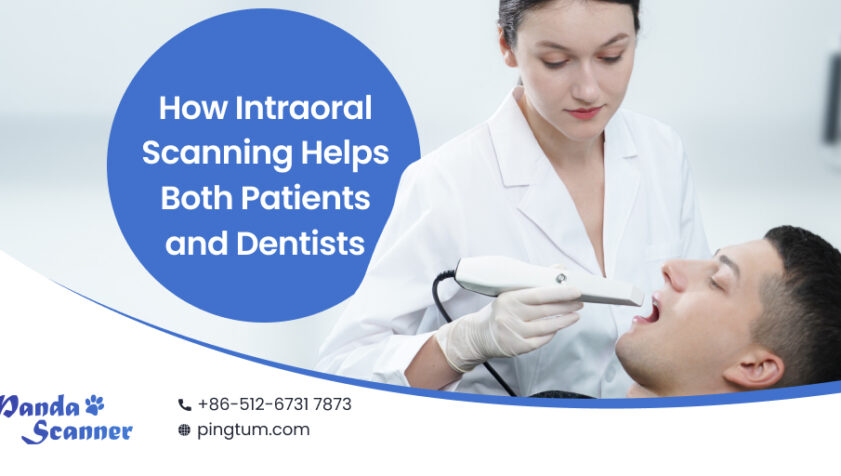Most dentists think about the accuracy and functionality of an intraoral scanner before going digital. However, the main reason for making the transition is none other than the benefits it will offer to patients.
How do you provide the best treatment experience for your patients?
Well, the simple answer is that you want them to be comfortable during the treatment so that they’re likely to come again. It’s one of the reasons why demand for a 3D dental scanner has increased in the last few years. Furthermore, it goes without saying that dentists want to offer the best experience to their patients. Let’s find out how intraoral scanning technology can benefit patients.

The Best Ways Intraoral Scanning Technology Helps Your Patients
- Saves time and Improves Comfort
One of the best things about having an intraoral scanner is that it benefits both patients and doctors. When it comes to scanning a patient’s teeth, it takes about 3–4 minutes for a complete full-arch scan. Now you can instantly send the data to the lab, and the process is complete. In other words, no impression material is needed, there is no need for the patient to remain seated for the PVs to dry, and there is no gagging or messy hassle. As a result, you will see a streamlined workflow and enjoy more productivity. Furthermore, patients feel more comfortable during the treatment, you get additional time to work out the treatment plan, and you even get time for your personal life too.
- 3D Scanning Gets Treatment Appreciation
At the beginning, intraoral scanning was meant to digitise the impressions and make restorations based on the data. However, the process has changed a lot since then. For instance, you may share your scans with your patients while they are still seated in your chamber. Patients don’t have to stretch to turn around and observe them because the cart is mobile; you can just move the monitor to the desired location or direction with ease. A little adjustment that has a significant impact on patient acceptability. Patients are better able to grasp the health of their teeth and are more inclined to accept treatment when they can view their 3D data on an HD screen. This makes it simpler for dentists to discuss a treatment with them.
- Builds More Trust
Products with digital dentistry technology, like the Panda P2 Intraoral Scanner, were a clever approach to helping patients understand what was going on in their mouths once they were used in diagnostic visits and as a teaching tool. This approach makes your work procedure transparent, which may help you gain the patients’ trust. The patient may only have one fractured tooth and be unaware that they have a more serious problem. There will be exciting developments in your practise after adopting digital scanning as a diagnostic tool and outlining how it may assist them in regaining their smiles.
- Hygienic Procedure and Precision
Unlike the traditional procedure of taking impressions, where errors and uncertainties were high, the latest digital scanners are highly accurate when it comes to the results. Hence, it improves workflow because accurate scanning results and precise tooth structure are generated within minutes after scanning. Also, it’s easy to rescan, and there’s no need to remake the entire impression.
The COVID-19 epidemic has sped up the adoption of digital processes since they are more sanitary and require less direct physical contact with patients, resulting in a more “touch-free” patient experience.
- More Referrals
Patients are dentists’ most intimate form of advertising and their most powerful supporters, yet they are frequently disregarded. Remember that when someone decides to see the dentist, there’s a considerable chance they’ll ask their friends or family for recommendations on a reputable practitioner. Even a lot of dentists are active on social media, frequently presenting their good work and giving patients hope that they may get their smiles back. Investing in the most recent digital technology makes it possible to give patients a comfortable and precise treatment, which improves the possibility that they will refer your practise to their friends and family.
Final Thoughts
In contemporary times, several dentists are advertising their investment in digital dental scanners because it gets the attention of patients who find them reliable and comforting. For them, receiving cutting-edge care in a pleasant setting while saving time has become the standard. It’s also a development for dentistry in the future. Whether or not your patients have experienced an intraoral scanner before, you may still provide them with a comfortable, new, and exciting patient dental experience.






